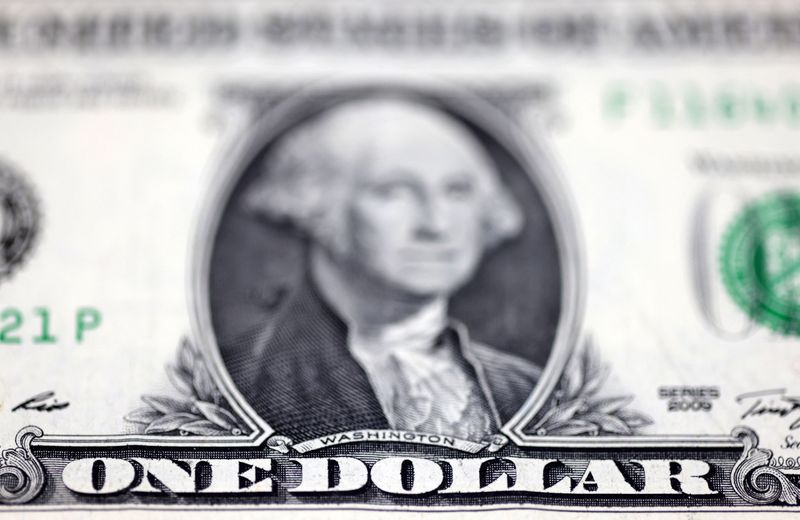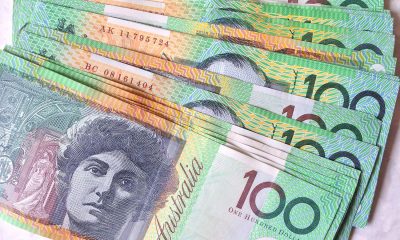Forex
Dollar pares gains on soft US inflation data


© Reuters. U.S. Dollar banknote is seen in this illustration taken July 17, 2022. REUTERS/Dado Ruvic/Illustration/File Photo
By Karen Brettell
NEW YORK (Reuters) – The pared gains on Friday after U.S. producer prices unexpectedly fell in December, raising expectations of an early U.S. rate cut.
It was higher on the day, boosted by safety buying after U.S. and British warplanes, ships and submarines launched dozens of air strikes across Yemen overnight.
The producer price index for final demand dipped 0.1% last month, after a decline in the cost of goods, while prices for services were unchanged, increasing the chances of lower inflation in the months ahead.
That led traders to add to bets for a rate cut in the coming months. Fed funds futures now imply a 79% chance of a March rate cut, up from 73% on Thursday, according to the CME Group’s (NASDAQ:) FedWatch Tool.
“Even though you wouldn’t say overall that the macroeconomic picture is screaming at you that they need to cut that fast, the market seems to be excited about the prospect of cuts,” said Steve Englander, head of Global G10 FX Research and North America Macro Strategy at Standard Chartered (OTC:) Bank NY Branch.
Traders maintained their view that a March rate cut is likely even after consumer price inflation data on Thursday came in above economists’ expectations. Last week’s jobs report for December also showed strong jobs growth, though underlying details of the report were mixed.
The dollar index was last up 0.19% at 102.40.
The New Zealand and Australian currencies were among the best performers after Friday’s data, but pared gains later in the day.
“If this is a trade, it’s going to be the higher beta currencies that respond the most and take comfort that the market’s clearly hot to trot on the Fed cutting. As long as that’s the perception in the market, I think the higher yielders will do very well,” Englander said.
The was last up 0.22% on the day at $0.62460. The was little changed at $0.66870.
Foreign exchange moves were likely tempered by traders closing positions ahead of a U.S. long weekend, with markets closed on Monday for the Martin Luther King Jr. holiday.
The U.S. currency benefited earlier from risk aversion after the strikes on Yemen, which came in retaliation for attacks by Iran-backed Houthi forces on Red Sea shipping, widening regional conflict stemming from Israel’s war in Gaza.
The Norwegian krone also gained as oil prices increased on the rising geopolitical tensions. The U.S. dollar was last down 0.25% at 10.29 krone.
The euro, which is among the most exposed regions to higher energy costs, dipped 0.15% to $1.09555.
The dollar fell 0.29% against the Japanese yen to 144.87.
Sterling dropped 0.12% to $1.27470 after data on Friday showed that Britain’s economy grew slightly more than expected in November but remains at risk of a mild recession.
In cryptocurrencies, bitcoin last stood at $43,643, down more than 5%, having surged to a two-year high of $49,051 on Thursday after the U.S. Securities and Exchange Commission on Wednesday gave the green light to offer ETFs linked to bitcoin.

 Forex3 years ago
Forex3 years agoForex Today: the dollar is gaining strength amid gloomy sentiment at the start of the Fed’s week

 Forex3 years ago
Forex3 years agoUnbiased review of Pocket Option broker

 Forex3 years ago
Forex3 years agoDollar to pound sterling exchange rate today: Pound plummeted to its lowest since 1985

 Forex3 years ago
Forex3 years agoHow is the Australian dollar doing today?

 Cryptocurrency3 years ago
Cryptocurrency3 years agoWhat happened in the crypto market – current events today

 World3 years ago
World3 years agoWhy are modern video games an art form?

 Commodities3 years ago
Commodities3 years agoCopper continues to fall in price on expectations of lower demand in China

 Economy3 years ago
Economy3 years agoCrude oil tankers double in price due to EU anti-Russian sanctions





















